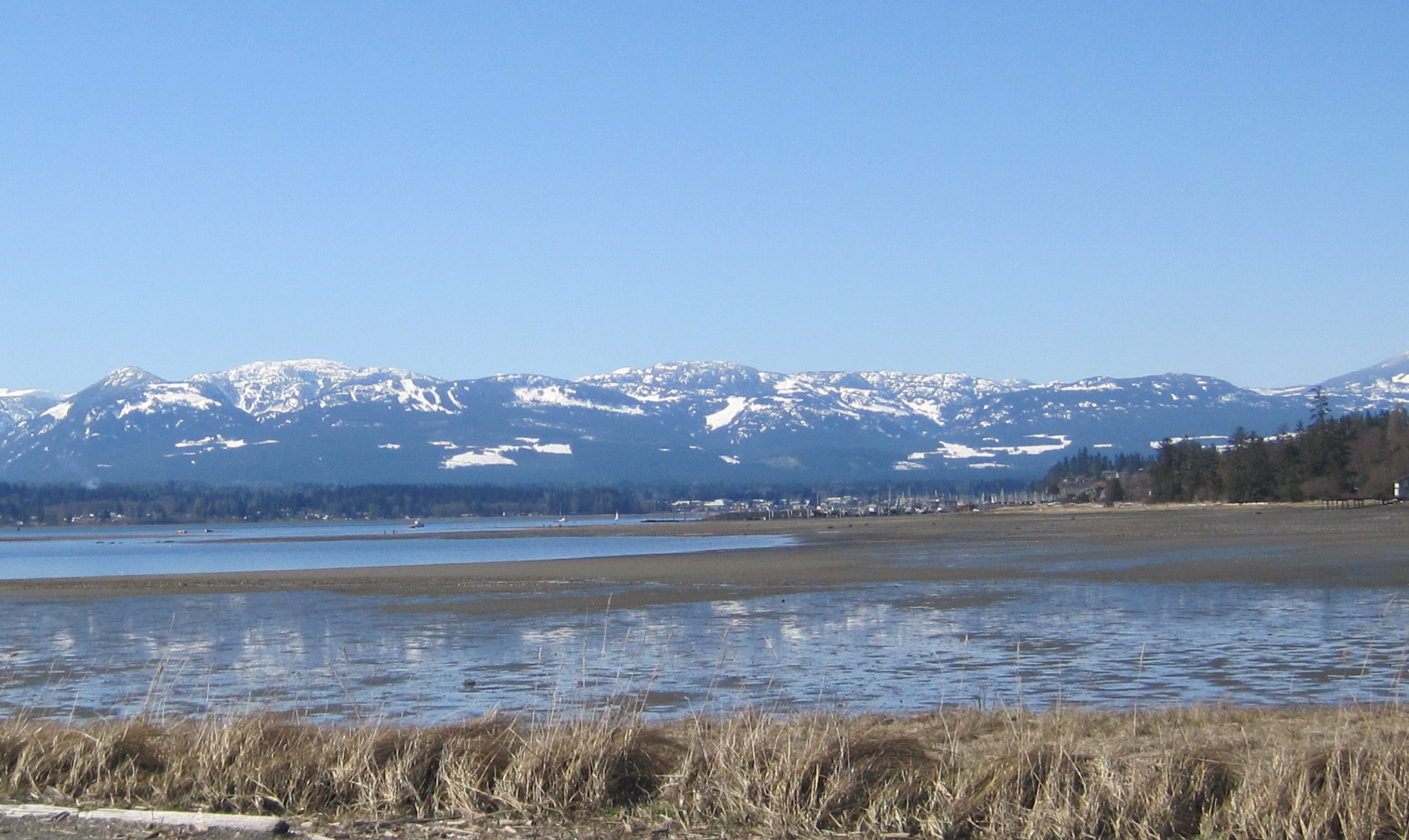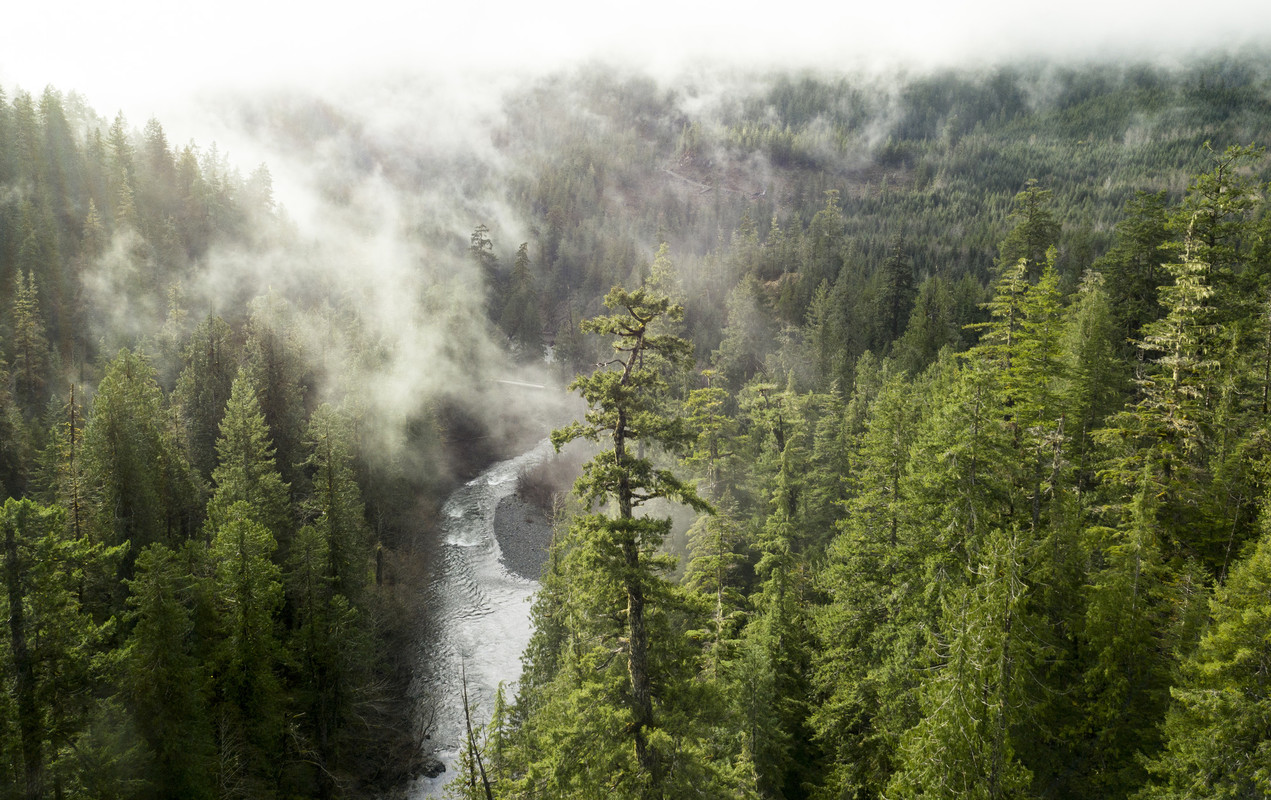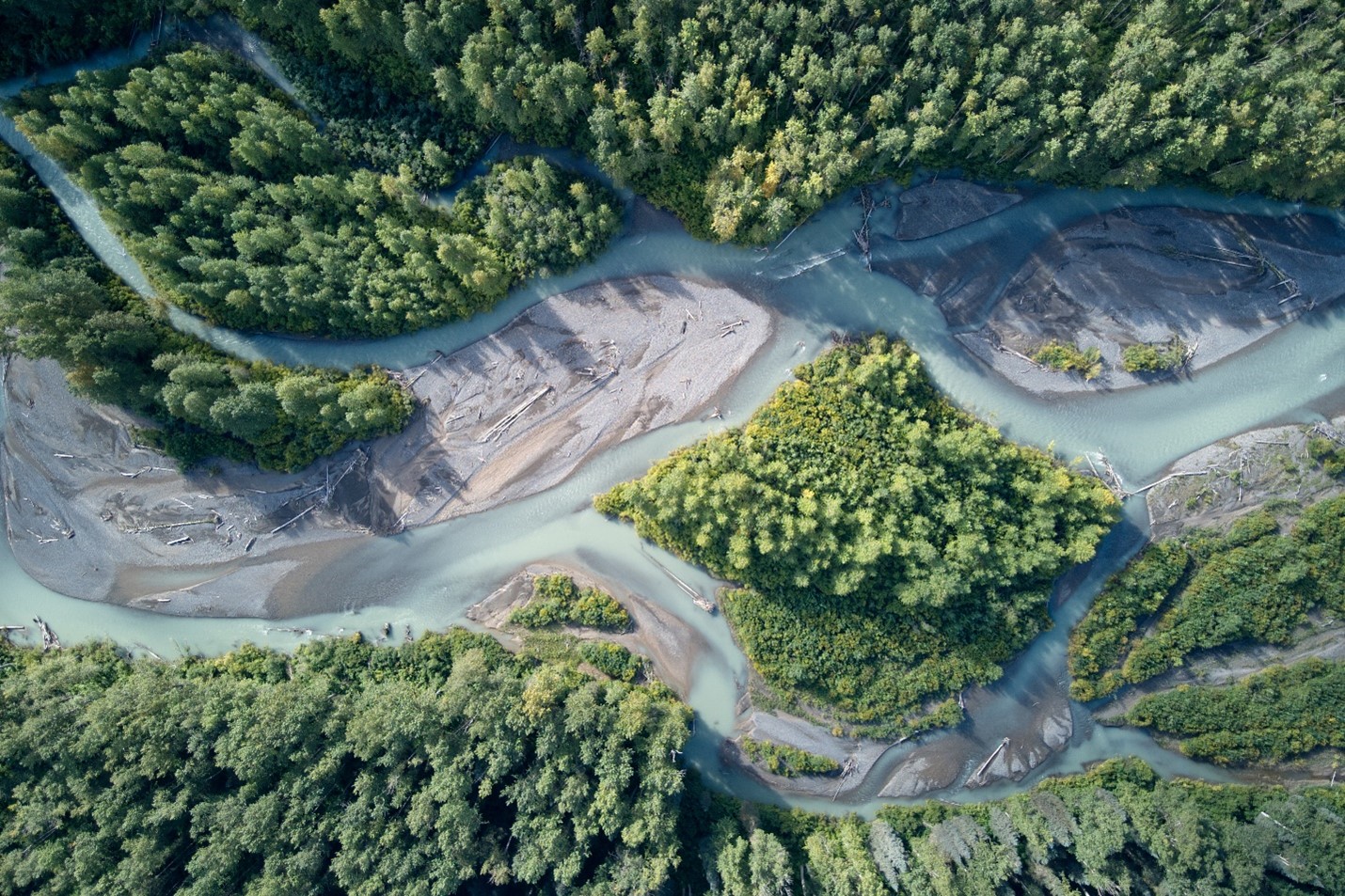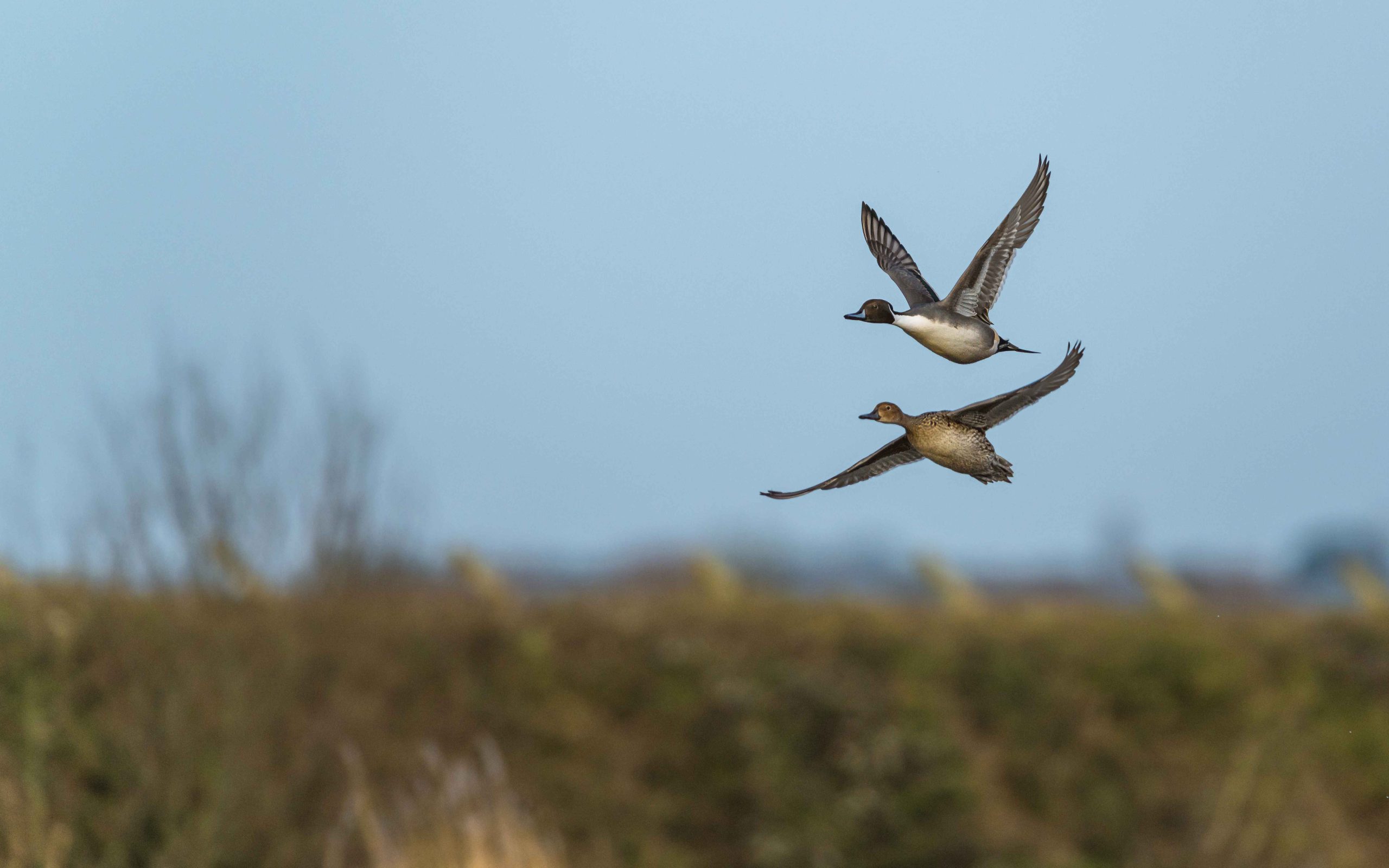
K’ómoks Treaty Negotiations
On this page…
- Treaty progress overview
- The K’ómoks First Nation
- Summary of treaty negotiations
- Overview of the proposed K’ómoks Treaty
- Recent engagement
- What’s next
- About modern treaties
- Resources
Overview
Who: K’ómoks First Nation (K’ómoks), the Government of Canada (Canada) and the Province of British Columbia (B.C.)
What: Treaty negotiations
Where: Vancouver Island
Why: Constitutionally protected agreements that set the relationship between the parties to work toward common goals of reconciliation and recognition of First Nations rights and title, to partner on shared priorities and to create jurisdictional and operational certainty in the region
How: In-person, online
Treaty progress overview
Since 1994, K’ómoks First Nation (K’ómoks) has been involved in treaty negotiations with the Government of Canada (Canada) and the Province of British Columbia (B.C.).
Negotiations are now concluded, and the parties are preparing to ratify the treaty and move to stage 6 – Implementation of the Treaty –of the B.C. treaty negotiations process. Read more about that process here. The treaty table includes K’ómoks, Canada, B.C., the British Columbia Treaty Commission, and local government representatives, including the Comox Valley Regional District, the Town of Comox, the City of Courtenay and the Village of Cumberland.
On July 22, 2024, the chief negotiators from all three parties — K’ómoks, Canada and B.C.—initialled the K’ómoks Treaty.
Initialling marks an important milestone in the treaty journey, as it signals the conclusion of substantive negotiations. Initialling is subject to important caveats, including Canada and B.C. fulfilling their duty to consult other First Nations and the completion of a final legal and technical review of the treaty.
The legal and technical review of the treaty concluded in November 2024, resulting in the ratification version of the K’ómoks Treaty.
Read the ratification version of the K’ómoks Treaty (PDF, 11MB) and K’ómoks Treaty Appendices (PDF, 31MB). Please note this version of the K’ómoks Treaty and Appendices replaces the previous initialed version.
After initialling, the treaty must go through a ratification process — a process that takes several more years.
On March 8, 2025, in the first step of the ratification process, K’ómoks First Nation held their ratification vote for eligible voters, who voted in favour of ratifying their treaty and self-government constitution (PDF, 250KB).
The K’ómoks First Nation
tuwa akʷs χoχoɬ ʔa xʷ yiχmɛtɛt (ʔa) kʷʊms hɛhaw tʊms gɩǰɛ
“Care takers of the ‘land of plenty’ since time immemorial”
K’ómoks traditional territory spans the Comox Valley in the central eastern part of Vancouver Island, extending into Johnstone Strait. The K’ómoks Nation has approximately 350 members, primarily located in the Comox Valley.
Oral histories and archaeology describe a rich and bountiful relationship between the K’ómoks people and their territory. Salmon, herring, shellfish, herring, deer, elk, seal, cod, rockfish, geese, duck, and a plethora of berries and plant foods filled the bellies of young and old alike. The harvest, preparation and cultivation of local resources were appropriate to the environment, resource, and spiritual beliefs. Fish weirs, clam gardens, duck nets, berry picking techniques and clothing design met the needs of the K’ómoks people, and for generations provided variety, utility, and sense of cultural uniqueness. Mask dances and rhythmic songs filled the winter nights and throughout the seasons. Property was distributed to guests in potlatches and elaborate naming ceremonies honoured the youth, leaders, and Elders of the communities.
Today, K’ómoks is active in the local economy and has strong relationships with local governments, which are supportive of the treaty. Local governments in the region have worked together with K’ómoks for years to prepare for the treaty, including co-investing in water treatment and management and sewage infrastructure for the region.
Summary of treaty negotiations
K’ómoks entered treaty negotiations in the early 1990s. In 2012, negotiators for K’ómoks, Canada, and B.C. reached an Agreement-in-Principle (AIP), establishing agreement on the substantive elements to be detailed in the completed treaty.
In the years since, K’ómoks, B.C. and Canada have engaged with all levels of government, industry, interest holders, and people in the region on various elements of the proposed treaty. K’ómoks has worked closely with its local government partners to invest in shared services and regional economic development. During this time, B.C. and Canada also continued their engagement in Crown consultation with neighbouring and overlapping First Nations as the negotiations progressed.
Initialling the K’ómoks Treaty in July 2024 signalled the conclusion of substantive negotiations, subject to certain caveats such as ongoing legal and technical review and consultation with neighbouring First Nations.
The legal and technical review of the K’ómoks Treaty concluded in November 2024, resulting in the ratification version of the K’ómoks Treaty. Consultation with neighbouring First Nations is ongoing.
After these steps are completed, it sets the stage for a ratification process, in which the First Nation, B.C. and Canada seek approval to sign the treaty. Ratification is the approval process that treaties must go through before they can come into effect.
The first step in this process is the K’ómoks ratification vote. To ratify, the treaty and constitution require a double majority vote outcome by K’ómoks eligible voters. This means more than 50% of eligible voters on the voters list cast a ballot, and more than 50% of those voters cast a ballot in favour of the treaty and constitution.
On March 8, 2025, K’ómoks held their ratification vote for eligible voters, who voted in favour of ratifying their treaty and self-government constitution. Of the 91% of eligible voters who voted on the treaty and constitution, 81% voted “yes” on the treaty and 83% voted “yes” on the constitution. Based on these results, the ratification vote thresholds were met.
With eligible voters voting in favour of ratifying the treaty and constitution, the next step in the ratification process is for B.C. and Canada to undergo their own respective ratification approval processes. This includes passing provincial, and then federal treaty implementation legislation to bring the treaty into law.
Overview of the proposed K’ómoks Treaty
K’ómoks, B.C. and Canada have been negotiating the agreement in stages, with consultations with other First Nations, the public and interest holders throughout. Local government representatives have also sat at the negotiation table as part of the provincial negotiating team. This approach provides opportunities for people and key interest holders to share their needs and help shape treaty provisions that work for all. As a result, the treaty reflects work done together on shared regional priorities established in the 2012 AIP. Read the Agreement-in-Principle (PDF, 14MB)
The proposed K’ómoks Treaty would:
- Ensure Aboriginal rights are recognized and not extinguished and describe how K’ómoks rights will be exercised
- Clarify that the treaties do not infringe or extinguish the rights of neighbouring First Nations
- Lay out negotiated approaches to self governance, and confirm land parcels totalling approximately 34.6 km2 (3,460 hectares or 8,550 acres) to be owned and governed by K’ómoks, with an ability for K’ómoks to purchase and add up to 15.92 km2 (1,592 hectares or 3,934 acres) of additional land over time
- Address existing interests and tenures on proposed treaty lands (interest-holders have been engaged on the proposed approach to their tenure or interest)
- Commit K’ómoks and B.C., in light of shared concern for sustainable watersheds, to develop a water scarcity management agreement for collaborative groundwater management under provincial legislation, with engagement from the region’s water users, and
- Consultation and opportunities for co-management of resources for K’ómoks within the K’ómoks territory.
The treaty will provide the basis for a revitalized relationship between K’ómoks and all levels of government by fostering shared understanding about K’ómoks rights and delivering economic predictability in the region. The K’ómoks Treaty is intended to create jobs, promote investment and economic development, build housing, support tourism, encourage investments in infrastructure and support social well-being for the K’ómoks First Nation community, all of which will benefit the entire Comox Valley and surrounding area.
More information about the K’ómoks Treaty can be found in the following fact sheets:
Recent engagement
Local government, interest holder and public engagement is important for everyone at the treaty table. Engagement provides an opportunity for local governments, interest holders and the public to learn more about the treaty and discuss hopes and issues for the treaty and its implementation.
From May to October 2022, K’ómoks, Canada and B.C. engaged with local communities in the region via local government presentations, open houses, community events, and mailed materials.
A What We Heard Report was developed from discussions with the public on the closing of treaty negotiations. This report describes the engagement activities and participation rates, including feedback and questions collected during the engagement process, along with responses given by the negotiating partners.
Read the What We Heard Report (PDF, 2MB).
In recent years, correspondence has been sent to, and meetings have been held with, interest and tenure holders to discuss forms of replacement tenures and the arrangements for continuation of interests such as water licences and woodlots.
What’s next
There are several steps in the treaty process that need to be completed before the treaty could come into effect.
The ratification process, which follows the initialling of the treaty, takes several years.
With K’ómoks voting in favour of ratifying the K’ómoks Treaty and self-government constitution in March 2025, the next step in the process is for B.C. to ratify the treaty. B.C. expects to introduce treaty implementation legislation to the B.C. Legislative Assembly in 2026. If this legislation passes, the treaty will be provincially ratified.
After provincial ratification, all parties sign the treaty and finally Canada ratifies by passing treaty implementation legislation in the Canadian Parliament. If ratified by all parties, the K’ómoks Treaty is expected to have an effective date around 2028.
The parties will conduct ongoing public engagement during this period, so everyone who is potentially impacted by the treaty is kept informed. Canada and B.C. will also continue its consultation process with neighbouring First Nations during this period.
Make sure to sign-up for email updates to find out about future engagement opportunities and key milestones in treaty negotiations: komoks.treaty@gov.bc.ca
About modern treaties
Treaties signed today are known as modern treaties. Modern treaties in British Columbia, other than the Nisga’a treaty, are negotiated under the B.C. treaty negotiations framework, facilitated by the British Columbia Treaty Commission. Treaties are comprehensive, living agreements protected under the Canadian constitution. They promote positive and stable conditions to support each First Nation’s government, community well-being and economic growth.
Treaties are an important part of Canada and B.C.’s work to advance reconciliation guided by the United Nations Declaration on the Rights of Indigenous Peoples (UNDRIP) and the Truth and Reconciliation Commission’s Calls to Action.
Modern treaties outline the First Nation’s responsibilities and jurisdictions over treaty lands, such as ownership, access, governance, taxation and environmental management. Treaties empower First Nations to step out of the Indian Act’s legislative control. As living agreements, these treaties do not freeze rights in time. Rather, they are foundations from which First Nations can build partnerships, expand economic development and support their community’s social well-being.
Modern treaties are one pathway for reconciliation that help move away from conflict and uncertainty. Treaties recognize that neighbours are stronger working together and help build a brighter future for everyone. Treaties give certainty, ending the application of laws and policies that deny equal opportunity and reconcile First Nations rights with other rights, rather than replacing or extinguishing those rights.
By bringing together First Nations, Canada and B.C. for formal negotiations with public consultation, modern treaties are also an opportunity for local communities to share their needs and challenges to shape treaty provisions. As a result, modern treaties provide significant benefits for all people in their regions, stronger community bonds, and plans to work together on shared priorities.
Examples of benefits that have come from modern treaties include:
- Local Investment: Treaties include funding from the federal and provincial government which are invested by First Nations directly in B.C.’s local communities, including funding education, cultural vitality, land and water-management, homes for people and economic development to build strong, safe and healthy communities. A well-known Deloitte1 study shows every dollar invested in agreements like treaties generates more than double in return in terms of economic activity.
- Social Well-Being and Empowerment: Treaties include protection and revitalization of First Nations culture, language and heritage. Canada’s Community Well-Being Index (CWB) shows overall higher well-being in modern treaty regions following the conclusion of a treaty.
- Economic Opportunity and Prosperity: Modern Treaty Nations are diversifying local economies in culturally relevant ways, helping build B.C.’s strong, sustainable, clean economy.
- Services People Rely On: Treaties enable First Nations to develop revenue streams and build capacity in critical services such as housing, health care and education.
- Protecting our Land, Water and Resources: Treaties contain provisions that enable local communities and First Nations to work together to ensure local land, water and resources are managed sustainably.
1Deloitte (Oct 2016) “Socio-economic Benefits of Modern Treaties in BC” (PDF, 600KB)
Resources
- British Columbia Treaty Commission (Treaty Commission)
- K’ómoks First Nations website
- K’ómoks First Nations Treaty webpage
- K’ómoks Agreement in Principle, signed March 24, 2012 (PDF, 14MB)
- About K’ómoks First Nation (B.C. webpage)
- United Nations Declaration on the Rights of Indigenous Peoples (PDF, 170KB)
- B.C. Declaration on the Rights of Indigenous Peoples Act
- Read the ratification version of the K’ómoks Treaty (PDF, 11MB) and K’ómoks Treaty Appendices (PDF, 31MB). Please note this version of the K’ómoks Treaty and Appendices replaces the previous initialed version.
- Minister’s statement on K’ómoks Treaty and Constitution vote outcome: https://news.gov.bc.ca/32074
- Info bulletin on upcoming ratification vote for K’ómoks Treaty, Constitution: https://news.gov.bc.ca/32058
- Initialling draft K͛ómoks Treaty news release: https://news.gov.bc.ca/31334
- Public update information bulletin: https://news.gov.bc.ca/releases/2024IRR0038-001103
- Public invitation information bulletin: https://news.gov.bc.ca/releases/2022IRR0052-001296
- Public results information bulletin: https://news.gov.bc.ca/releases/2023IRR0028-000854






